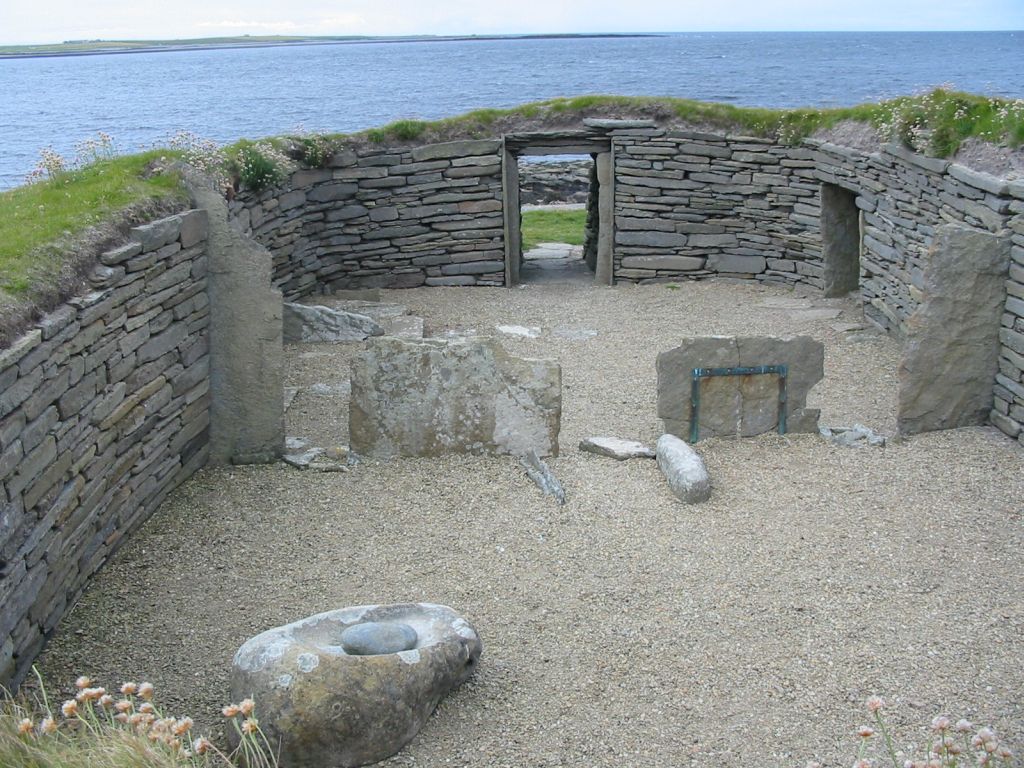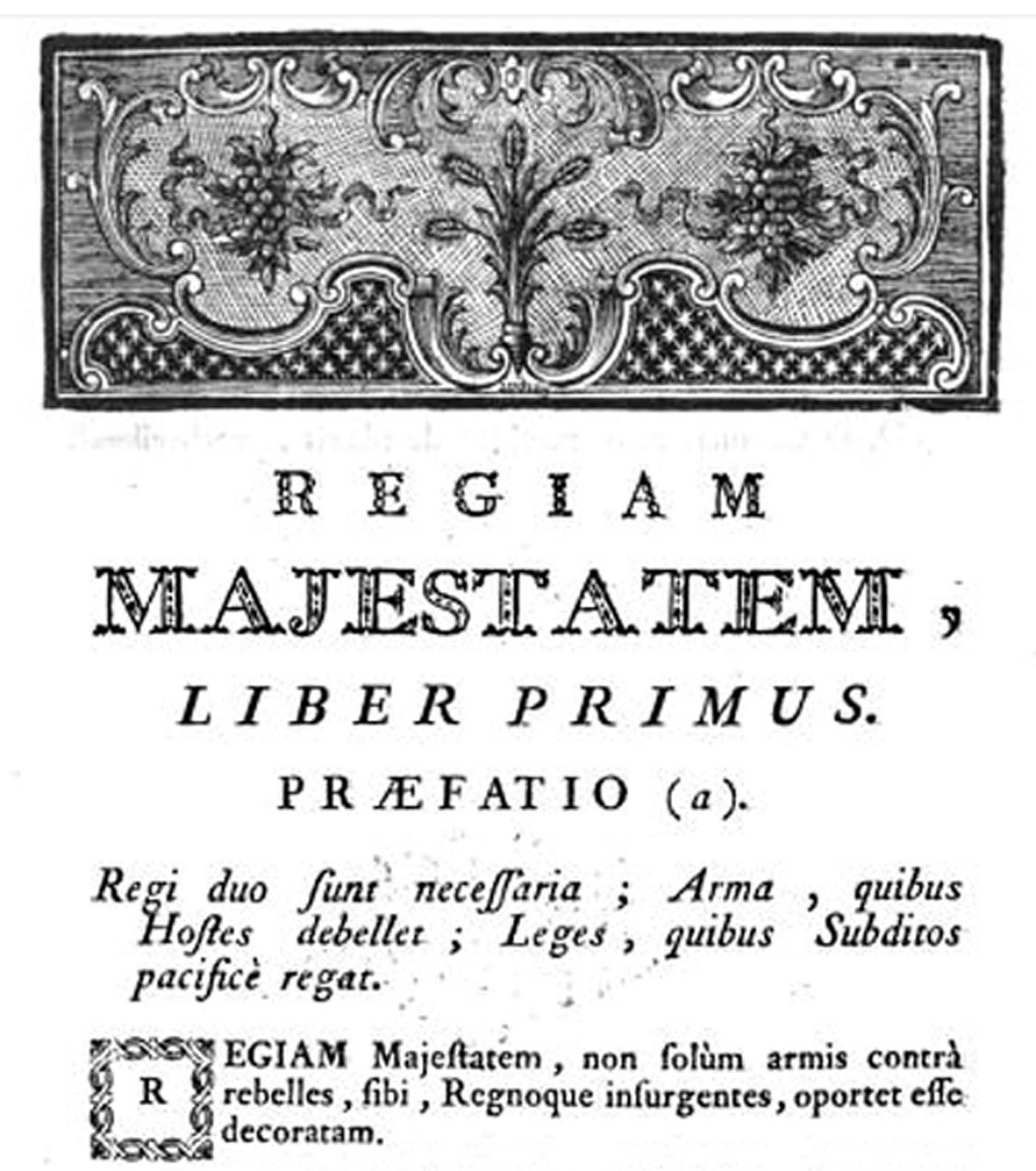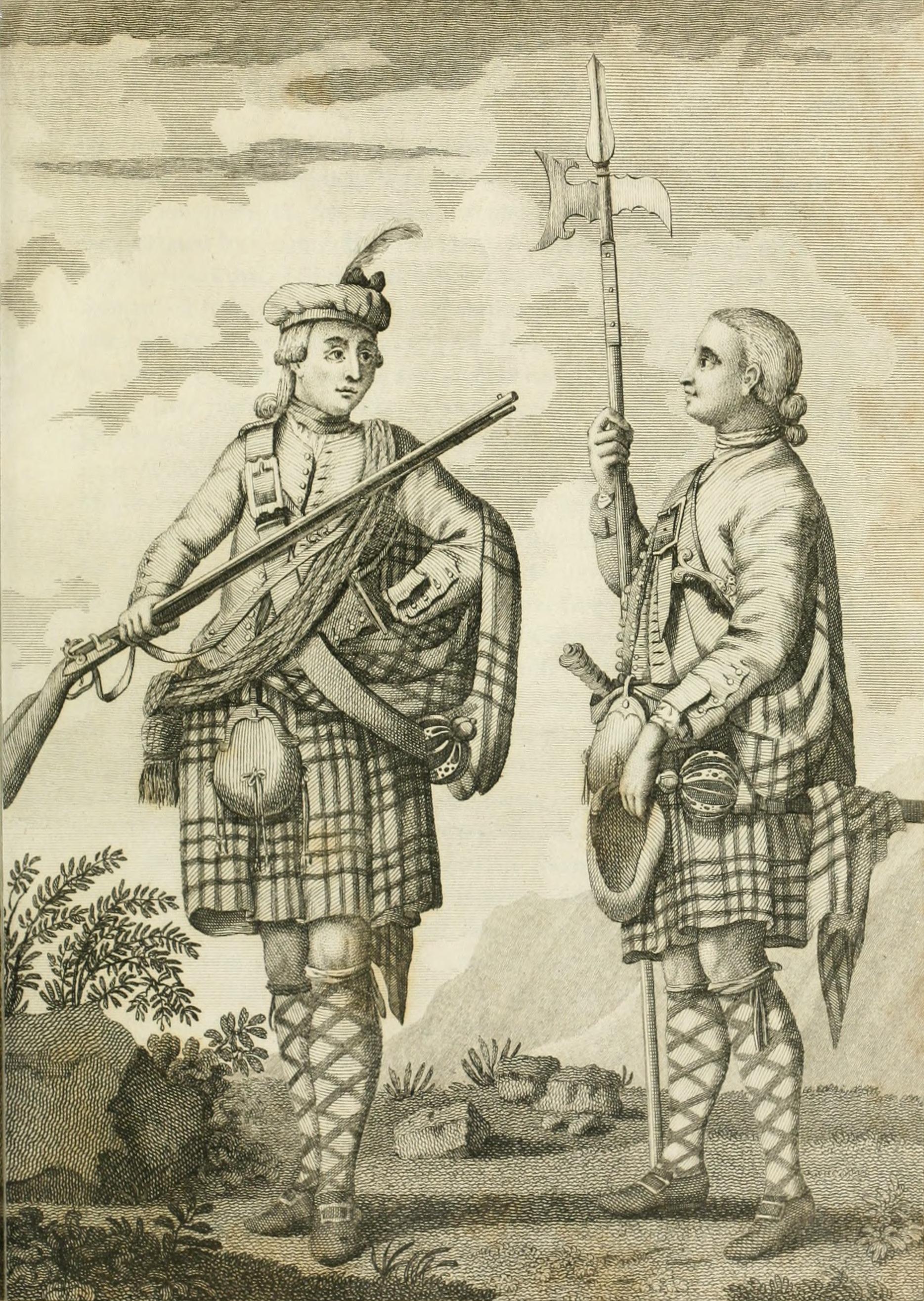|
Disarming Act 1715
The Highlands Services Act 1715, also known as the Disarming Act 1715 ( 1 Geo. 1. St. 2. c. 54), was an 18th-century Act of Parliament of Great Britain that was enacted to curtail Jacobitism among the Scottish clans in the Scottish Highlands after the Jacobite rising of 1715. The new law, which came into effect on 1 November 1716, aimed at "securing the peace of the highlands in Scotland". It outlawed anyone in defined parts of Scotland from having "in his or their custody, use, or bear, broad sword, poignard, whinger, or durk, side pistol, gun, or other warlike weapon" unless authorised. However, the act proved ineffectual at enforcing the ban. In 1725 a new act was passed that for "disarming the highlands in that part of Great Britain called Scotland; and for the better securing the peace and quiet of that part of the kingdom". This new law was enforced by Major-General George Wade, who used it to successfully confiscate a significant number of weapons. Wade's efforts to con ... [...More Info...] [...Related Items...] OR: [Wikipedia] [Google] [Baidu] |
1 Geo
1 (one, unit, unity) is a number, numeral, and glyph. It is the first and smallest positive integer of the infinite sequence of natural numbers. This fundamental property has led to its unique uses in other fields, ranging from science to sports, where it commonly denotes the first, leading, or top thing in a group. 1 is the unit of counting or measurement, a determiner for singular nouns, and a gender-neutral pronoun. Historically, the representation of 1 evolved from ancient Sumerian and Babylonian symbols to the modern Arabic numeral. In mathematics, 1 is the multiplicative identity, meaning that any number multiplied by 1 equals the same number. 1 is by convention not considered a prime number. In digital technology, 1 represents the "on" state in binary code, the foundation of computing. Philosophically, 1 symbolizes the ultimate reality or source of existence in various traditions. In mathematics The number 1 is the first natural number after 0. Each natural number ... [...More Info...] [...Related Items...] OR: [Wikipedia] [Google] [Baidu] |
Charles Edward Stuart
Charles Edward Louis John Sylvester Maria Casimir Stuart (31 December 1720 – 30 January 1788) was the elder son of James Francis Edward Stuart, making him the grandson of James VII and II, and the Stuart claimant to the thrones of England, Scotland, and Ireland from 1766 as Charles III. During his lifetime, he was also known as "the Young Pretender" and "the Young Chevalier"; in popular memory, he is known as Bonnie Prince Charlie. Born in Rome to the exiled Stuart court, he spent much of his early and later life in Italy. In 1744, he travelled to France to take part in a planned invasion to restore the Stuart monarchy under his father. When storms partly wrecked the French fleet, Charles resolved to proceed to Scotland following discussion with leading Jacobites. This resulted in Charles landing by ship on the west coast of Scotland, leading to the Jacobite rising of 1745. The Jacobite forces under Charles initially achieved several victories in the field, including the Ba ... [...More Info...] [...Related Items...] OR: [Wikipedia] [Google] [Baidu] |
18th Century In Scotland
The recorded history of Scotland begins with the Scotland during the Roman Empire, arrival of the Roman Empire in the 1st century, when the Roman province, province of Roman Britain, Britannia reached as far north as the Antonine Wall. North of this was Caledonia, inhabited by the ''Picti'', whose uprisings forced Rome's legions back to Hadrian's Wall. As Rome finally Roman withdrawal from Britain, withdrew from Britain, a Gaels, Gaelic tribe from Ireland called the ''Scoti'' began colonising Western Scotland and Wales. Before Roman times, prehistoric Scotland entered the Neolithic Era about 4000 BC, the Bronze Age about 2000 BC, and the Iron Age around 700 BC. The Gaelic kingdom of Dál Riata was founded on the west coast of Scotland in the Scotland in the Early Middle Ages, 6th century. In the following century, History of Christianity in Ireland, Irish missionaries introduced the previously Pictish religion, pagan Picts to Celtic Christianity. Following S ... [...More Info...] [...Related Items...] OR: [Wikipedia] [Google] [Baidu] |
Acts Of The Parliament Of Great Britain Concerning Scotland
The Acts of the Apostles (, ''Práxeis Apostólōn''; ) is the fifth book of the New Testament; it tells of the founding of the Christian Church and the spread of its message to the Roman Empire. Acts and the Gospel of Luke make up a two-part work, Luke–Acts, by the same anonymous author. Traditionally, the author is believed to be Luke the Evangelist, a doctor who travelled with Paul the Apostle. It is usually dated to around 80–90 AD, although some scholars suggest 110–120 AD.Tyson, Joseph B., (April 2011)"When and Why Was the Acts of the Apostles Written?" in: The Bible and Interpretation: "...A growing number of scholars prefer a late date for the composition of Acts, i.e., c. 110–120 CE. Three factors support such a date. First, Acts seems to be unknown before the last half of the second century. Second, compelling arguments can be made that the author of Acts was acquainted with some materials written by Josephus, who completed his Antiquities of the Jews in 93� ... [...More Info...] [...Related Items...] OR: [Wikipedia] [Google] [Baidu] |
Legal History Of Scotland
The history of Scots law traces the development of Scots law from its early beginnings as a number of different custom systems among Scotland's early cultures to its modern role as one of the three legal jurisdictions of the United Kingdom. The various historic sources of Scots law, including custom, feudal law, canon law, Roman law and English law have created a hybrid or mixed legal system, which shares elements with English law and Northern Irish law but also has its own unique legal institutions and sources. Origins The nature of Scots law before the 12th century is largely speculative but most likely was a folk-right system applying a specific customary legal tradition to a certain culture inhabiting a certain corresponding area at the time, e.g. Brehon law for the Gaels (Scoti and men of Galloway and Ayrshire), Welsh law for lowland Britons of Yr Hen Ogledd, Udal law for the Norse of Caithness and the islands, and Anglo-Saxon law in Lothian and Borders. The earliest ... [...More Info...] [...Related Items...] OR: [Wikipedia] [Google] [Baidu] |
Great Britain Acts Of Parliament 1725
Great may refer to: Descriptions or measurements * Great, a relative measurement in physical space, see Size * Greatness, being divine, majestic, superior, majestic, or transcendent People * List of people known as "the Great" * Artel Great (born 1981), American actor * Great Osobor (born 2002), Spanish-born British basketball player Other uses * ''Great'' (1975 film), a British animated short about Isambard Kingdom Brunel * ''Great'' (2013 film), a German short film * Great (supermarket), a supermarket in Hong Kong * GReAT, Graph Rewriting and Transformation, a Model Transformation Language * Gang Resistance Education and Training, or GREAT, a school-based and police officer-instructed program * Global Research and Analysis Team (GReAT), a cybersecurity team at Kaspersky Lab *'' Great!'', a 2018 EP by Momoland *Great! TV, British TV channel group * ''The Great'' (TV series), an American comedy-drama See also * * * * * The Great (other) The Great is the moniker ... [...More Info...] [...Related Items...] OR: [Wikipedia] [Google] [Baidu] |
Military Disbanding And Disarmament
A military, also known collectively as armed forces, is a heavily armed, highly organized force primarily intended for warfare. Militaries are typically authorized and maintained by a sovereign state, with their members identifiable by a distinct military uniform. They may consist of one or more military branches such as an army, navy, air force, space force, marines, or coast guard. The main task of a military is usually defined as defence of their state and its interests against external armed threats. In broad usage, the terms "armed forces" and "military" are often synonymous, although in technical usage a distinction is sometimes made in which a country's armed forces may include other paramilitary forces such as armed police. Beyond warfare, the military may be employed in additional sanctioned and non-sanctioned functions within the state, including internal security threats, crowd control, promotion of political agendas, emergency services and reconstruction, pro ... [...More Info...] [...Related Items...] OR: [Wikipedia] [Google] [Baidu] |
Battle Of Culloden
The Battle of Culloden took place on 16 April 1746, near Inverness in the Scottish Highlands. A Jacobite army under Charles Edward Stuart was decisively defeated by a British government force commanded by the Duke of Cumberland, thereby ending the Jacobite rising of 1745. Charles landed in Scotland in July 1745, seeking to restore his father James Francis Edward Stuart to the British throne. He quickly won control of large parts of Scotland, and an invasion of England reached as far south as Derby before being forced to turn back. However, by April 1746, the Jacobites were short of supplies, facing a superior and better equipped opponent. Charles and his senior officers decided their only option was to stand and fight. When the two armies met at Culloden, the battle was brief, lasting less than an hour, with the Jacobites suffering an overwhelming and bloody defeat. This effectively ended both the 1745 rising, and Jacobitism as a significant element in British politics. Ba ... [...More Info...] [...Related Items...] OR: [Wikipedia] [Google] [Baidu] |
Act Of Proscription 1746
The Act of Proscription (19 Geo. 2. c. 39), also called the Act of Proscription 1746 or the Disarming the Highlands, etc. Act 1745, was an Act of Parliament (UK), Act of the Parliament of Great Britain, which came into effect in Scotland on 1 August 1746. It was part of a series of efforts to Cultural assimilation, assimilate the Scottish Highlands, ending their ability to revolt, and the first of the "King's laws" that sought to crush the Scottish clan, clan system in the aftermath of the Jacobite rising of 1745. These laws were finally repealed on 1 July 1782. Background From 1745 to 1746, government forces led by the Prince William, Duke of Cumberland, Duke of Cumberland gradually suppressed the Jacobite rising of 1745. As the majority of the Jacobite Army (1745), Jacobite Army consisted of men from the Scottish Highlanders, the Hanoverian regime made plans to suppress the Highland clan system to prevent future rebellions. Penalties It was mainly a restatement of the earlier ... [...More Info...] [...Related Items...] OR: [Wikipedia] [Google] [Baidu] |
Battle Of Prestonpans
The Battle of Prestonpans, also known as the Battle of Gladsmuir, was fought on 21 September 1745, near Prestonpans, in East Lothian, the first significant engagement of the Jacobite rising of 1745. Jacobitism, Jacobite forces, led by the Stuart exile Charles Edward Stuart and Lord George Murray (general), George Murray, defeated a government army under Sir John Cope (British Army officer), John Cope, whose inexperienced troops broke in the face of a Highland charge. The battle lasted less than thirty minutes, was a huge boost to Jacobite morale, and established the revolt as a serious threat to the British government. Background The War of the Austrian Succession meant that by early 1745, the bulk of British forces were committed in Flanders. Encouraged by French victory at Battle of Fontenoy, Fontenoy in April 1745, Charles Edward Stuart sailed for Scotland in July, hoping to take advantage of the situation. When he landed at Eriskay in the Outer Hebrides on 23 July, most of ... [...More Info...] [...Related Items...] OR: [Wikipedia] [Google] [Baidu] |
Brown Bess
"Brown Bess" is a nickname of uncertain origin for the British Army's Muzzleloader, muzzle-loading smoothbore flintlock Land Pattern Musket and its derivatives. The musket design remained in use for over a hundred years with many incremental changes in its design. These versions include the Long Land Pattern, the Short Land Pattern, the India Pattern, the New Land Pattern Musket, and the Sea Service Musket. The Long Land Pattern musket and its derivatives, all 0.75 inches Caliber, calibre flintlock muskets, were the standard long guns of the British Empire's land forces from 1722 until 1838, when they were superseded by a percussion cap smoothbore musket. The Glossary of British ordnance terms, British Ordnance System converted many flintlocks into the new Caplock mechanism, percussion system known as the Pattern 1839 Musket. A fire in 1841 at the Tower of London destroyed many muskets before they could be converted. Still, the Brown Bess saw service until the middle of the nin ... [...More Info...] [...Related Items...] OR: [Wikipedia] [Google] [Baidu] |





